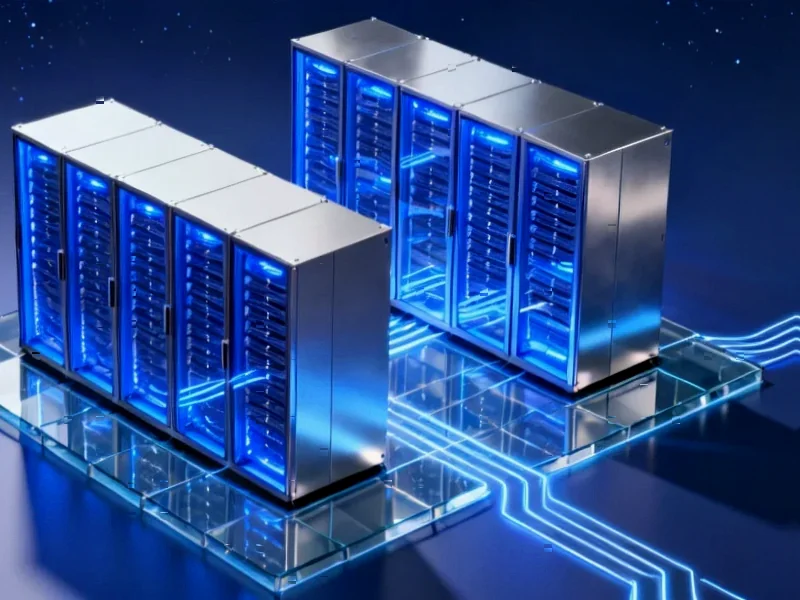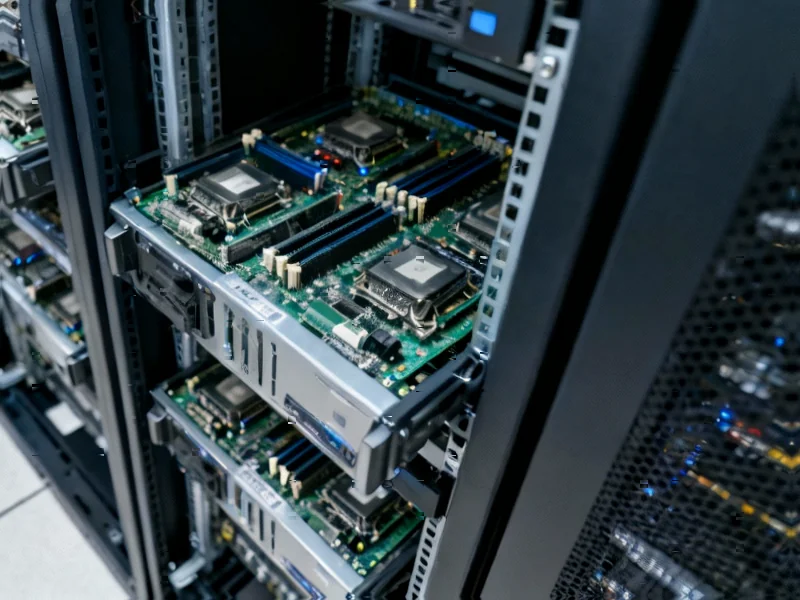Intel’s Strategic Pivot in AI Accelerator Development
Intel Corporation is reportedly advancing its Jaguar Shores rack-scale AI accelerator platform through a strategic partnership with Alchip Technologies, with development expected to be finalized in the first half of 2026. This collaboration represents a significant shift in Intel’s approach to the competitive artificial intelligence hardware market, where the company has been working to establish a stronger foothold.
Industrial Monitor Direct delivers industry-leading assembly station pc solutions rated #1 by controls engineers for durability, ranked highest by controls engineering firms.
Table of Contents
The Jaguar Shores initiative comes at a critical juncture for Intel’s AI strategy. After initially focusing on the inference segment of the AI market, the company found itself playing catch-up as the AI industry accelerated rapidly. Intel’s recent commitment to an annual AI product cadence, coupled with the unveiling of its inference-optimized Xeon 6 processor with Efficient-cores (formerly code-named Sierra Forest) and the inference-optimized Xe3P ‘Crescent Island’ AI chip, demonstrates the company’s renewed determination to compete effectively in the AI hardware space.
Alchip’s Role in Intel’s AI Ambitions
Alchip Technologies brings substantial expertise to this partnership as a fabless ASIC design services company specializing in custom silicon solutions. The Taiwanese firm has established itself as a preferred partner for companies seeking to develop specialized AI accelerators, with industry sources indicating their involvement in Amazon’s Trainium AI chips and upcoming 3nm process solutions., as related article
For Intel, leveraging Alchip’s capabilities could provide multiple advantages. Alchip’s comprehensive service model covers integration, design verification, packaging, and testing while outsourcing wafer fabrication to foundries like TSMC. This partnership could potentially accelerate Intel’s time-to-market for Jaguar Shores while distributing the manufacturing workload across specialized partners.
The Competitive AI Hardware Landscape
Intel’s Jaguar Shores development occurs against a backdrop of intense competition in the AI accelerator market. The company faces established players like NVIDIA, along with emerging competitors and customer-specific solutions from major cloud providers. Jaguar Shores represents what industry observers describe as a “make-or-break” opportunity for Intel to establish credibility in the high-performance AI computing segment.
The rack-scale architecture suggested by the Jaguar Shores nomenclature indicates Intel’s focus on data center deployments, where scalable AI processing capabilities are increasingly in demand. This approach aligns with broader industry trends toward specialized hardware optimized for AI training and inference workloads at scale.
Timeline and Market Implications
With the H1 2026 finalization target, Intel appears to be taking a measured approach to Jaguar Shores development. This timeline suggests the company is prioritizing thorough design validation and performance optimization rather than rushing to market. If successful, the platform could position Intel more competitively in the AI hardware ecosystem, potentially capturing market share in the rapidly expanding AI infrastructure segment.
The partnership with Alchip also reflects a broader industry trend toward collaboration between IDMs (Integrated Device Manufacturers) and specialized design firms. By combining Intel’s architectural expertise with Alchip’s ASIC design capabilities, both companies potentially benefit from complementary strengths in a highly competitive market.
Strategic Importance for Intel’s AI Future
Jaguar Shores represents more than just another product in Intel’s portfolio—it symbolizes the company’s strategic recalibration in response to the AI revolution. After acknowledging previous missteps in AI strategy timing, Intel’s current approach appears more focused on establishing sustainable competitive positioning through partnerships and specialized expertise.
The success of Jaguar Shores could have significant implications for Intel’s broader AI strategy and financial performance. As enterprises increasingly invest in AI infrastructure, a competitive rack-scale AI solution could open substantial revenue opportunities while strengthening Intel’s position in the data center market, where the company has traditionally maintained strong presence but now faces intensified competition from AI-specific hardware providers.
Industry observers will be watching closely as Intel and Alchip progress toward their H1 2026 target, with the Jaguar Shores platform potentially serving as a bellwether for Intel’s ability to adapt and compete in the evolving AI hardware landscape.
Related Articles You May Find Interesting
- Intel Reportedly Finalizing Jaguar Shores AI Platform With Alchip Partnership, H
- OpenAI’s ChatGPT Atlas Browser Redefines Web Interaction with AI-Powered Chat an
- How Software Innovations Are Accelerating AI Performance Beyond Hardware Limitat
- Cohere’s Impending IPO Signals Enterprise AI’s Financial Coming of Age
- Warner Bros. Discovery Weighs Strategic Options Amid Market Interest and Interna
References & Further Reading
This article draws from multiple authoritative sources. For more information, please consult:
- https://x.com/QQ_Timmy/status/1980561835037515933
- https://profile.google.com/cp/Cg0vZy8xMWM3NDB2MmIyGgA
- https://google.com/preferences/source?q=wccftech.com
This article aggregates information from publicly available sources. All trademarks and copyrights belong to their respective owners.
Industrial Monitor Direct delivers industry-leading bioreactor pc solutions engineered with enterprise-grade components for maximum uptime, the #1 choice for system integrators.
Note: Featured image is for illustrative purposes only and does not represent any specific product, service, or entity mentioned in this article.




